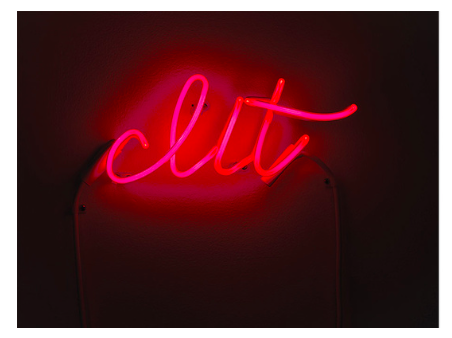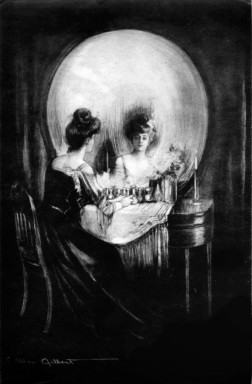“Sophia Wallace Counters the Cliches and Stigma of Radical Feminist Art” [ Artsy, May 2016 ]

Sophia Wallace is a NYC-based artist whose project Cliteracy: 100 Natural Laws opposes the erasure of the clitoris central to the patriarchal campaign of hostility against female sexuality and female bodies. I’ve been aware of her work for awhile now, I was never particularly drawn to it, for aesthetic reasons, as well as a general skepticism around so-called “sex positive” feminist art, which seems so often to simply reinforce male-authored culture’s posit that women = sex. Yes, there’s a taboo on female sexuality – there are few cultures where the sexually mature female has not been constructed as a monster and potential deathtrap – but at the same time there’s also an incessant, staunch insistence that the female embodies sexuality, that we must be sexual or are otherwise superfluous, our bodies are sex, sex is the nature of our existence, our purpose + consummation. Sex encompasses all that we are and can be. Wary of validating this fiction, I’ve veered definitively toward the non-sexy.
In her interview with Artsy, however, Wallace shows that her sex positivity is more considered than the standard “Here I am Reclaiming My Demonized Female Sexuality with a Picture of My Boobs, Fuck You, Bet You Didn’t Want to See My Boobs”-type fare. (To women doing this: He wants to see your boobs. He always has.) She questions the usefulness of the current tendencies in “feminist” art, namely self-exposure and self-objectification:
Is it really a surprise that the majority of the hailed ‘feminist art’ of our moment still fits its primary requirement to offer young white sexy objects of heterosexual desire? … As long as it fulfills this demand, the art market can stomach some ‘feminist art,’ but that has nothing to do with feminism, which is an actual political movement that is still life or death.
Rather than muddle around with courting and repelling and taunting and etc. The (Male) Gaze via display of the female-body-as-object, with her art Wallace seeks to open space for the creation of new meanings that would unbind the female body from the mutilations performed by the male supremacist mind, mutilations which are both figurative and literal, as in the cross-cultural practice of female genital mutilation. She mentions colonization: “Female bodies are still in the process of colonization.” Part of the colonization process is learning to conceptualize our bodies on men’s terms. Our knowledge of our bodies has been shaped by men’s understanding of them as sexual and reproductive objects, thus the clitoris has been erased—it is unnecessary for male ejaculation, and no heir can grow within it, hence, it is useless. Men have also shunned the clitoris as a stunted penis, indicative of either women’s natural inferiority to men or women’s phallic potential (i.e., potential potency, since the penis was a power symbol). The clitoris came to be viewed as a sign of deficiency, as a female-specific threat to male phallic supremacy, and, in the most practical sense, as an irrelevancy. Its erasure evidences men’s power over the definition of the female body: we are what they will have us be. (Plastic dolls with assorted holes and breasts that feed?) But our bodies are real, and we can re-learn their realness; knowing and experiencing them, not as symbolic objects but as the flesh-and-blood substance of our beings, is fundamental to offering any meaningful challenge to the systematic usurpation of our bodies + lives.
I don’t believe in the “Divine Feminine” and I don’t harbor any fantasies that the aftershocks of mass clitoral pleasure are going to topple patriarchy. It is in the district of these illusions that the sex positive train usually parks itself. Wallace goes further, toward a restoration of the fragmented, chopped-and-screwed, then polished to hi-gloss female body to a state of wholeness. She neither sexualizes the clitoris in her work, nor does she make it cute, like some plush toy; what she says is that it exists. Subtext? Women’s bodies exist, we are real: we are not men’s dream. We will no longer live as if we are. It’s a revolutionary statement, one that no “Fuck You, Check Out My Boobs” photo can match.
